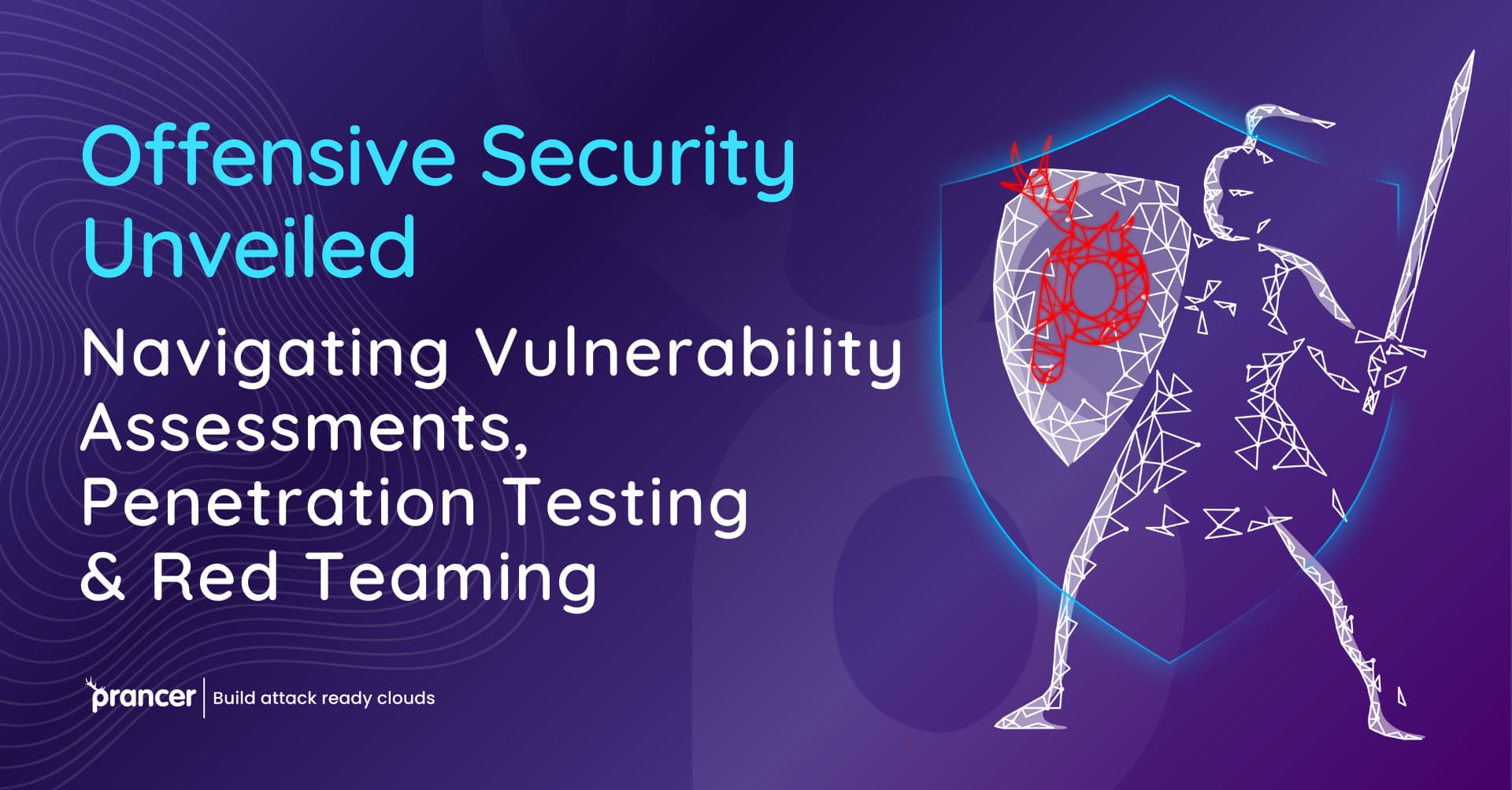

In the ever-evolving landscape of cybersecurity, distinguishing between vulnerability assessments, penetration testing, and red teaming can sometimes resemble navigating a labyrinth. Each approach serves a unique purpose in strengthening an organization’s security posture, yet confusion often arises regarding their differences, applications, and when to employ each strategy. With Prancer’s innovative solutions, organizations can effectively leverage these methodologies to enhance their cybersecurity defenses.
At first glance, vulnerability assessments, penetration testing, and red teaming might seem interchangeable. However, each serves distinct roles in a cybersecurity framework
Vulnerability Assessment focuses on identifying and reviewing a target environment’s security against well-known security issues like malware signatures, unpatched software, and open ports. This assessment is broad and non-exploitative, serving as a component of a comprehensive defense-in-depth strategy. It offers insights into residual risks at a reasonable cost but does not validate or demonstrate impact through exploitation.
Penetration Testing steps beyond mere identification by actively exploiting security vulnerabilities to measure the effectiveness of preventative security controls. This process involves a simulated cyberattack against your computer system to check for exploitable vulnerabilities. It’s distinguished by the human element, requiring cunning and creativity to breach the target environment. Penetration testing is time-bound, offering valuable data for risk-based decisions about security controls, thereby reducing overall risk.
Red Teaming represents a more holistic approach, measuring not just preventative but also detective and corrective security controls. It simulates real-world attacks to test the organization’s detection and response capabilities. Red teaming is particularly suited for organizations with mature security operations, as it involves coordination with the internal security (Blue Team) to fine-tune security mechanisms.
| Characteristic | Vulnerability Assessment | Penetration Testing | Red Teaming |
| Intent | Identify security vulnerabilities against well-known issues. | Exploit vulnerabilities to test preventative controls’ effectiveness. | Test the effectiveness of the overall security program, especially detection and response capabilities. |
| Scope | Broad, covering a wide range of potential vulnerabilities without exploitation. | Narrow, focused on exploiting specific vulnerabilities. | Broad and deep, involving complex scenarios to test multiple aspects of security. |
| Notification | Typically announced and scheduled. | Announced and conducted within a controlled time window. | Carried out with minimal or no notification to test realworld response capabilities. |
| Duration | Short-term, often automated | Time-bound, may last from a few days to several weeks. | Longer-term, can extend over weeks or months for comprehensive testing. |
| ROI | Provides insights into potential vulnerabilities at a reasonable cost. | Validates security effectiveness through exploitation, offering risk-based decisionmaking data. | Measures security response effectiveness, aiding in strategic decisions for overall security enhancement. |
| Suitability | Organizations seeking to identify and mitigate wellknown security issues. | Organizations needing to test the effectiveness of their security controls against active exploitation. | Organizations with mature security operations looking to test and improve their detection and response to sophisticated attacks. |
Prancer‘s capabilities span across both vulnerability assessments and penetration testing, offering a holistic approach to cybersecurity. With Prancer:
Prancer’s flexible service portfolio is designed to meet and exceed organizational security needs, from attack surface analysis to full-spectrum red team engagements. By partnering with clients, Prancer ensures not just the identification of security vulnerabilities but also the strategic application of findings to strengthen security measures, avoid common pitfalls, and ensure a robust defense against potential attacks.
In conclusion, understanding the differences between vulnerability assessments, penetration testing, and red teaming is crucial for organizations aiming to protect their digital assets effectively. Prancer’s comprehensive approach to security testing offers valuable tools and insights for enhancing cybersecurity measures across these different but complementary domains.
